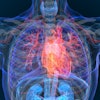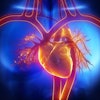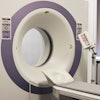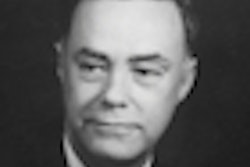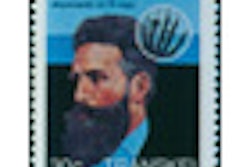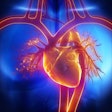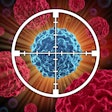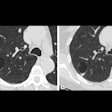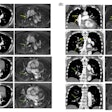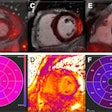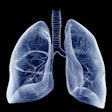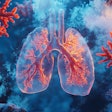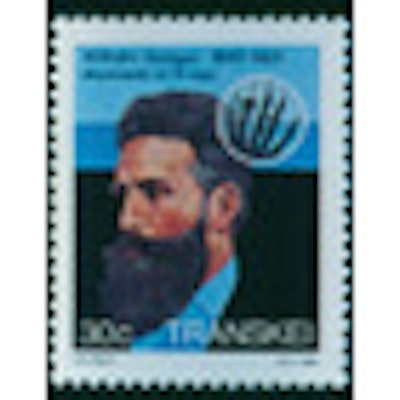
In 1969, the U.S. Congress passed a new piece of legislation on coal mining that called for compensation to miners who had developed pneumoconiosis, or black lung. The new program relied heavily on medical imaging to detect the disease, with radiology playing a major role in the program's implementation.
The legislation directed the U.S. Public Health Service to establish a system to detect respiratory difficulties as shown on chest x-ray for individual miners. This was a new proposal, and the Public Health Service needed some expert help.
Within a matter of months, the American College of Radiology (ACR) developed documents that defined how the chest x-ray program should be created, including a series of training programs for radiologists and pulmonologists to review and stage chest x-ray examinations of coal miners.
That relationship was the beginning of an extensive project in which ACR defined patterns, planned and conducted training, and developed a program by which radiologists could qualify as B reader consultants for the National Institute for Occupational Safety and Health (NIOSH), which was tasked with administering the program. The effort of the ACR Task Force on Pneumoconiosis, a newly created working group, quickly dominated the NIOSH control and involved cooperation of the American Medical Association, the American College of Chest Physicians, and other national medical organizations.
Four decades earlier, in the 1930s, political officials and doctors in Europe and South Africa had begun studying the exposure of miners to coal, diamonds, and other minerals. When the United Nations formed the International Labour Organization (ILO) at the end of World War II, the ILO assumed leadership of health studies for miners, including chest x-rays and a scheme of classification for the presence of harmful mineral dust in miners' lungs.
In the U.S., the Public Health Service's mandate broadly involved chest x-rays for the detection of tuberculosis in millions of people. Some of that countrywide effort involved regular surveys of food handlers, factory workers, and even millions of school children.
Some years before the coal miner legislation, the Public Health Service had involved Dr. Eugene Pendergrass, chief of radiology at the University of Pennsylvania, as a consultant on mineral dust respiration problems. Pendergrass had brought with him Dr. Ben Felson, a chest expert and chairman at the University of Cincinnati; Dr. George Jacobson, the chairman of radiology at the University of Southern California; and Dr. Leonard Bristol, a radiologist at a tuberculosis center in Saranac Lake, NY. In addition, at about the time of the legislation, they added Dr. Russell Morgan, radiology chairman at Johns Hopkins Medical School in Baltimore.
After the 1969 law, ACR wrote a letter to the U.S. Department of Health offering to cooperate with the Public Health Service in alerting doctors about the new black lung project and developing teaching programs. The task was assigned to NIOSH, and in a matter of weeks, ACR had submitted a proposal for physician training and the Public Health Service funded it.
Before then, a committee of the ILO had devised a scheme by which anyone reading a chest x-ray could classify the existence of any mineral dust in a patient's lung. Indeed, a somewhat obscure set of classified film examples had been devised by ILO in Europe. However, copies of those sets were not available in the U.S.
So the ACR task force designed a view box seminar in which attending radiologists would be provided with chest view boxes and copies of chest films that could be used for instruction. At that time, the duplication of x-ray films was generally unacceptable. However, as it happened, Eastman Kodak had designed a copy film and made sets of chest films selected from the NIOSH files, most of which had black lung examples.
The seminar drew 200 attendees, and copies of the films and x-ray view boxes were obtained by ACR. Each participant was required to look at the sample films, interpret them using the ILO classification, and then conduct workshops.
The impact was remarkable. Most attendees were excited and stimulated. NIOSH was also excited and asked the ACR team to conduct at least five more seminars in 1970.
The ACR task force was also working on the development of teaching monographs. Toward the end of the program's first year, ACR proposed that it should offer seminars to x-ray technologists, which would help them develop valid chest x-rays.
Also, the Public Health Service agreed that it would provide registration for radiologists and any other doctors who attended the courses, so that those radiologists could offer their services to perform and interpret chest x-rays, to be paid for by coal mine companies. The films and classification systems were provided to NIOSH, which responded to miners who had problems.
Expanding to asbestos
About a decade later, the U.S. government agreed that workers who were exposed to asbestos in various businesses might suffer from chest problems, the same as coal miners. ACR was requested to expand its seminars to include data about asbestos. In addition, many lawyers seeking to represent workers were interested in learning about chest x-rays. With Public Health Service consent, the ACR task force offered a series of seminars designed for lawyers.
As the concepts developed, NIOSH concluded that it was necessary to develop an improved version of the ILO classification and to seek more efficient films. So ACR presented an international workshop in Washington, DC, and the results led to changes in the program. By that time, ACR had developed its own center in California for the production of x-ray film copies. ACR duplicated the ILO films and made thousands of copies for ILO to sell around the world.
One other major project arose. The NIOSH staff decided that it would like to have a test for any radiologist wishing to be certified as a competent chest examination reader. Dr. Russell Morgan took on the task of developing and testing what became the B reader examination.
Members of the ACR task force helped to validate the exam, and most of them were qualified as chest x-ray consultants. Soon the examination was limited to four years, with a separate test group to be examined and passed for B reader recertification. Those tests are still a NIOSH requirement.
Through the following years, the ACR task force continued to work with NIOSH. It also developed a series of view box seminars to be offered to radiologists to study other chest respiratory problems, to include mammography and other body areas. Several seminars were requested for performance in other countries, including Australia and Japan. And the ACR team became involved with ILO tasks in meetings around the world.
In recent decades, the number of NIOSH B readers has diminished. But the qualification is still enforced, and the ACR task force arranges view box seminars. The most recent one was in 2009, and another is projected for 2014.
This is not the only development of ACR teaching programs. Some of them, in the ACR headquarters, now involve sophisticated electronic technology. However, the pneumoconiosis projects were experimental and creative. And the story is worth a notable spot in history and our collective memory.
Otha W. Linton, MSJ, retired in 1997 as the associate executive director of the ACR after 35 years. He also served as executive director of Radiology Centennial in 1995. Mr. Linton holds a bachelor's degree in journalism from the University of Missouri and a Master of Science in journalism from the University of Wisconsin. His work has been published widely in the U.S. and abroad, and he is a regular contributor to several journals including Academic Radiology, the American Journal of Roentgenology, Radiology, and the Journal of the American College of Radiology. He joined the ACR staff in 1961 and had a key role in its growth. Over the years, his responsibilities with the ACR included government affairs, public relations, marketing, publishing, industrial liaison, and international relations. Just before his ACR retirement, he became the executive director of the International Society of Radiology and served in that role until earlier this year. Also, since his retirement, he has written and published 14 histories of radiology societies and academic centers.
